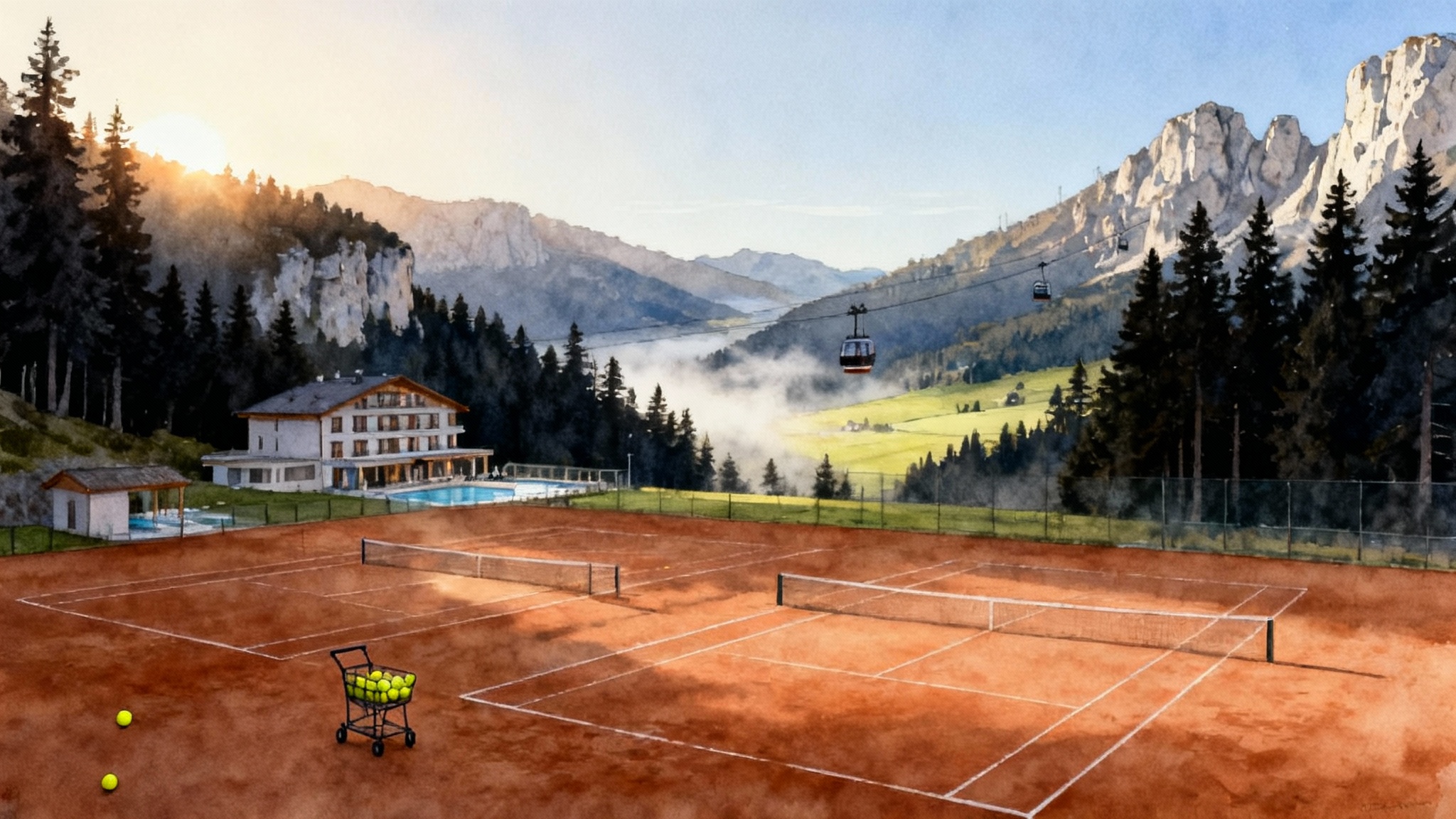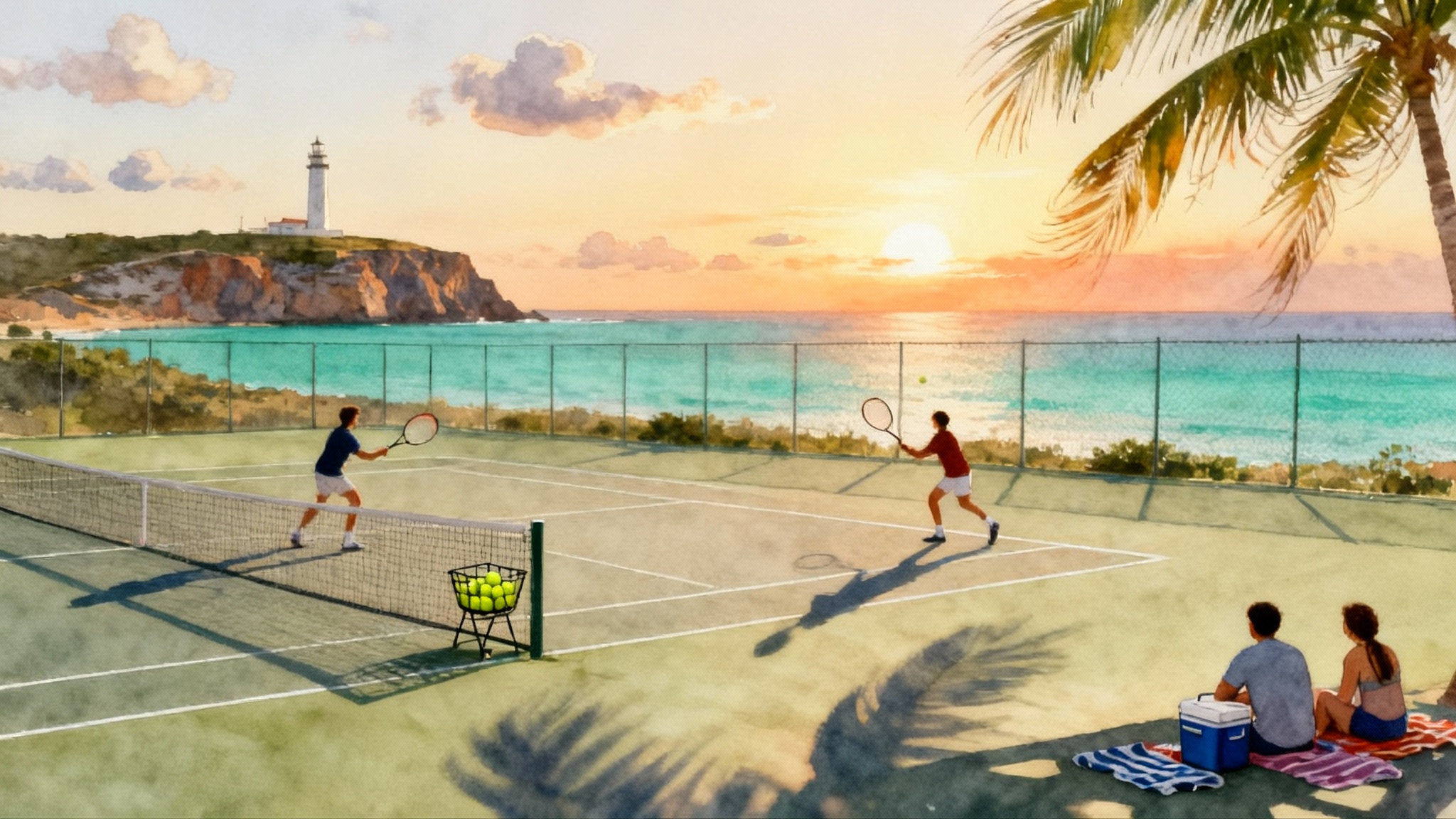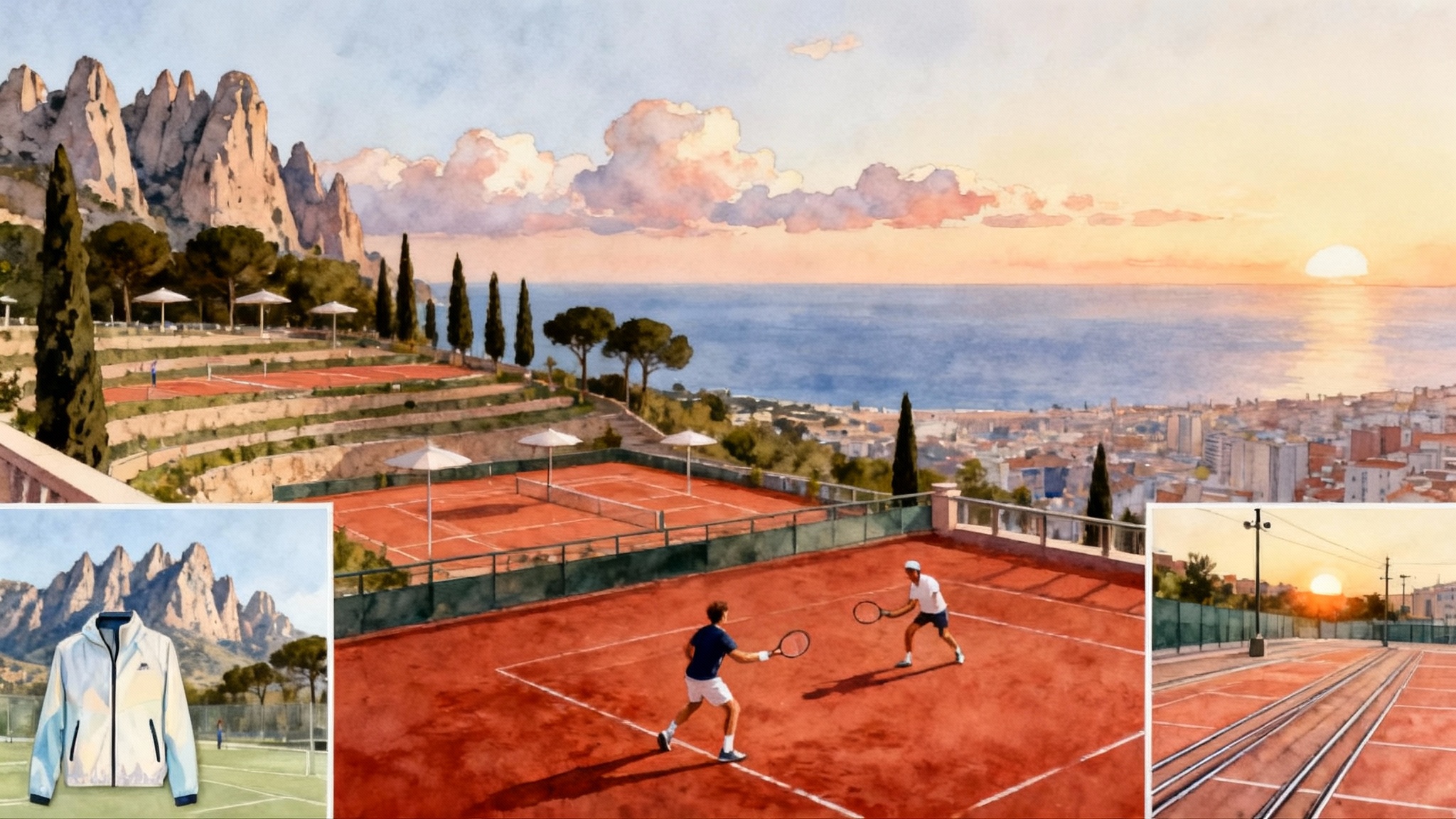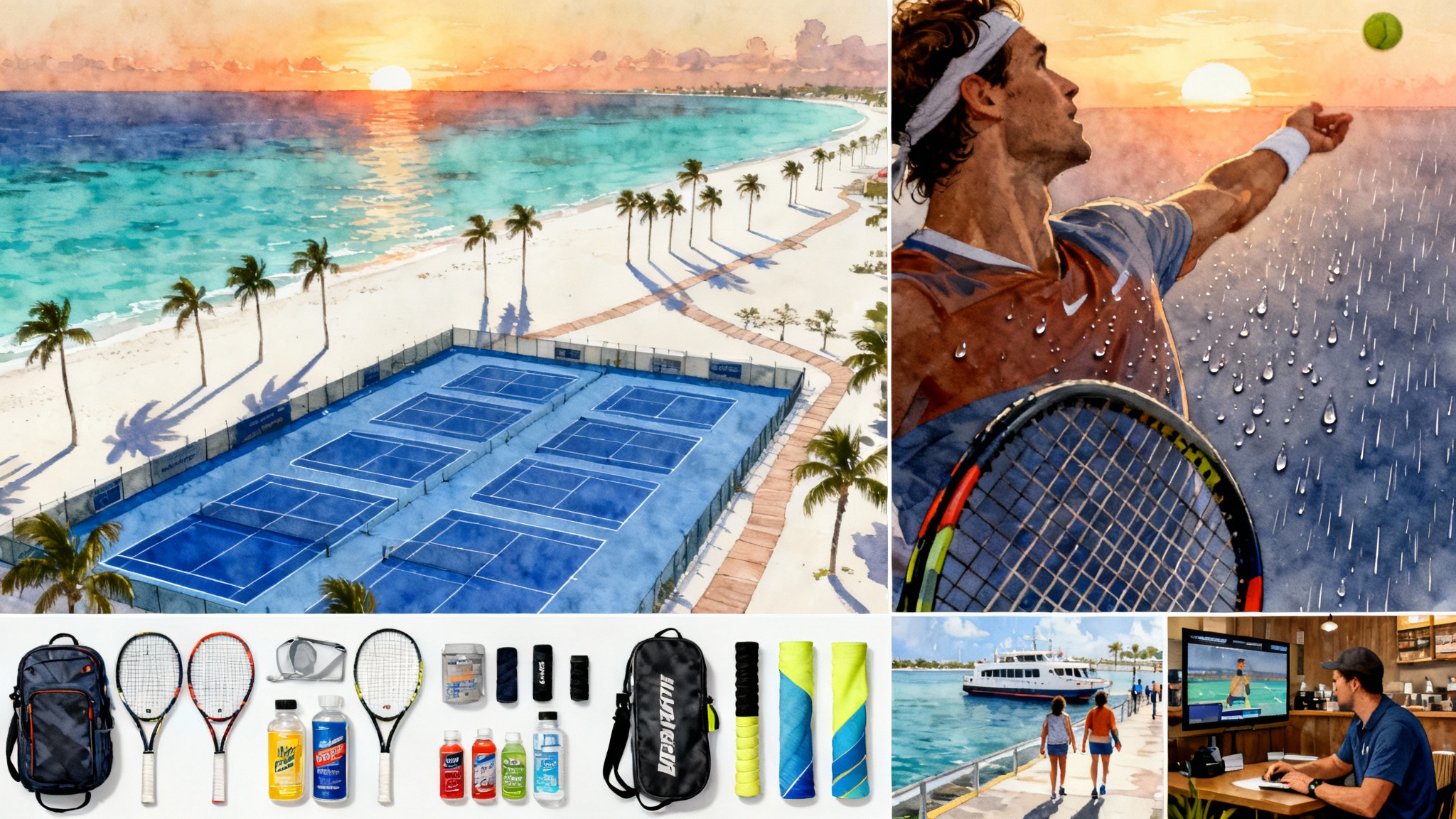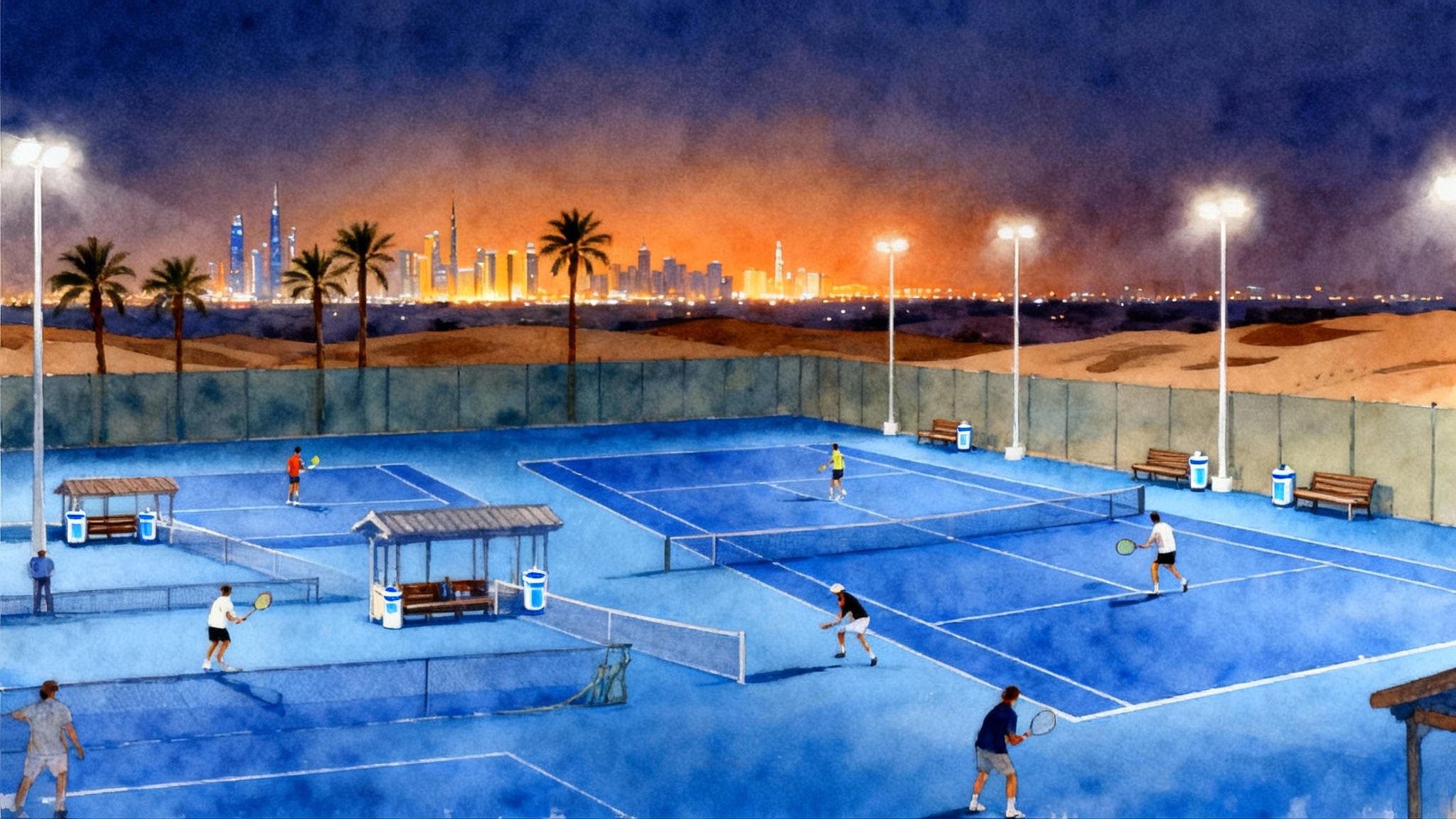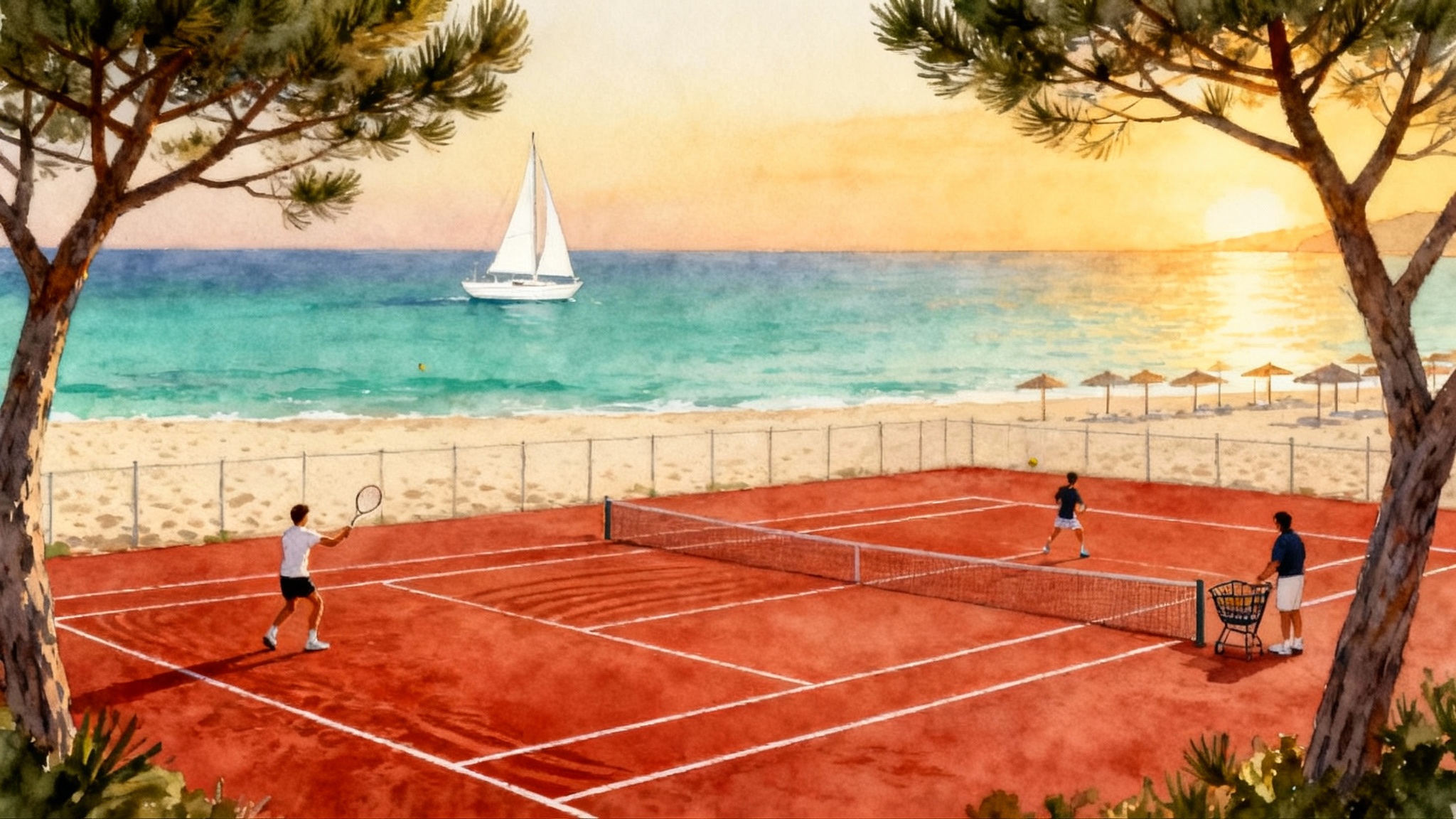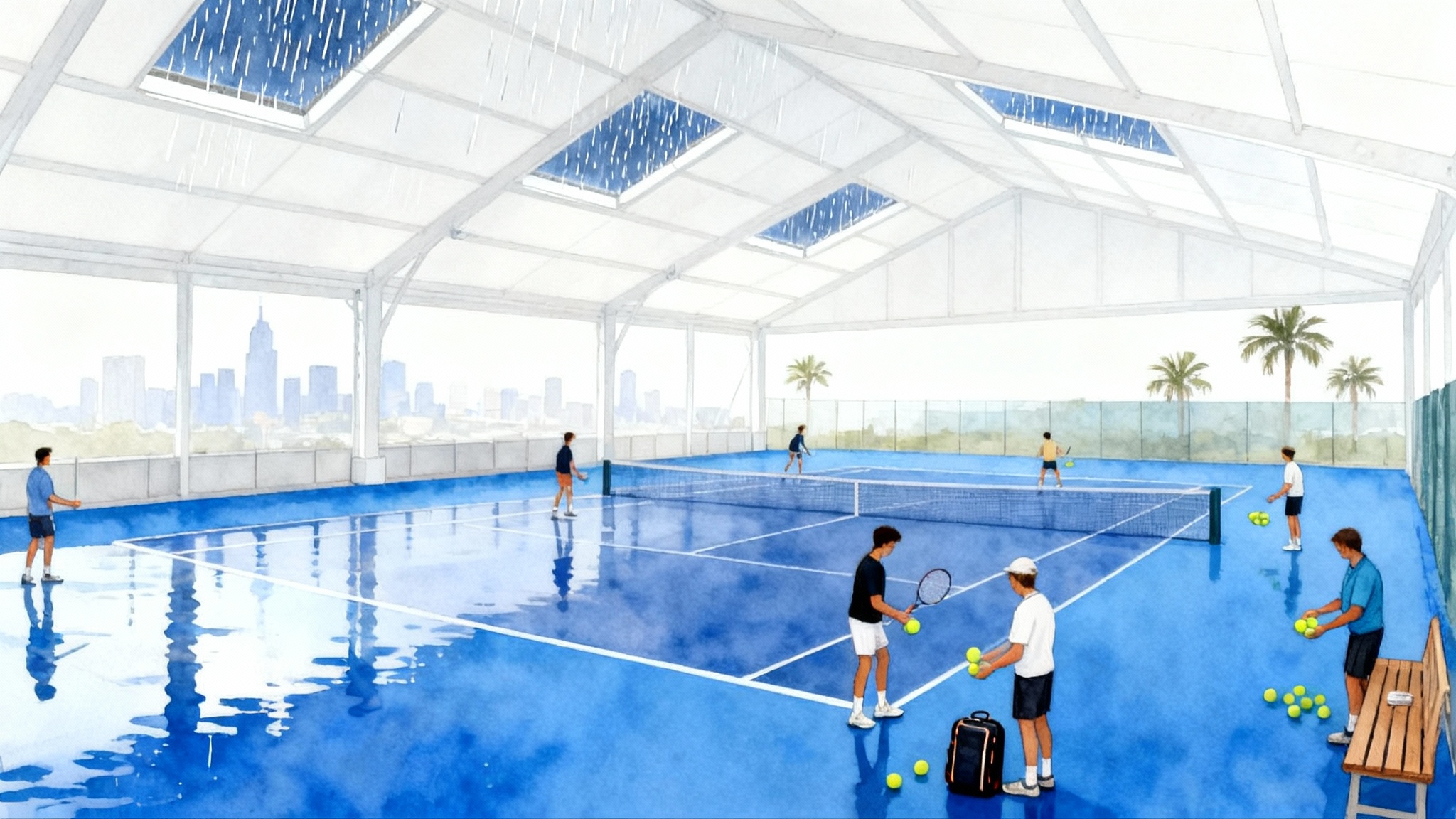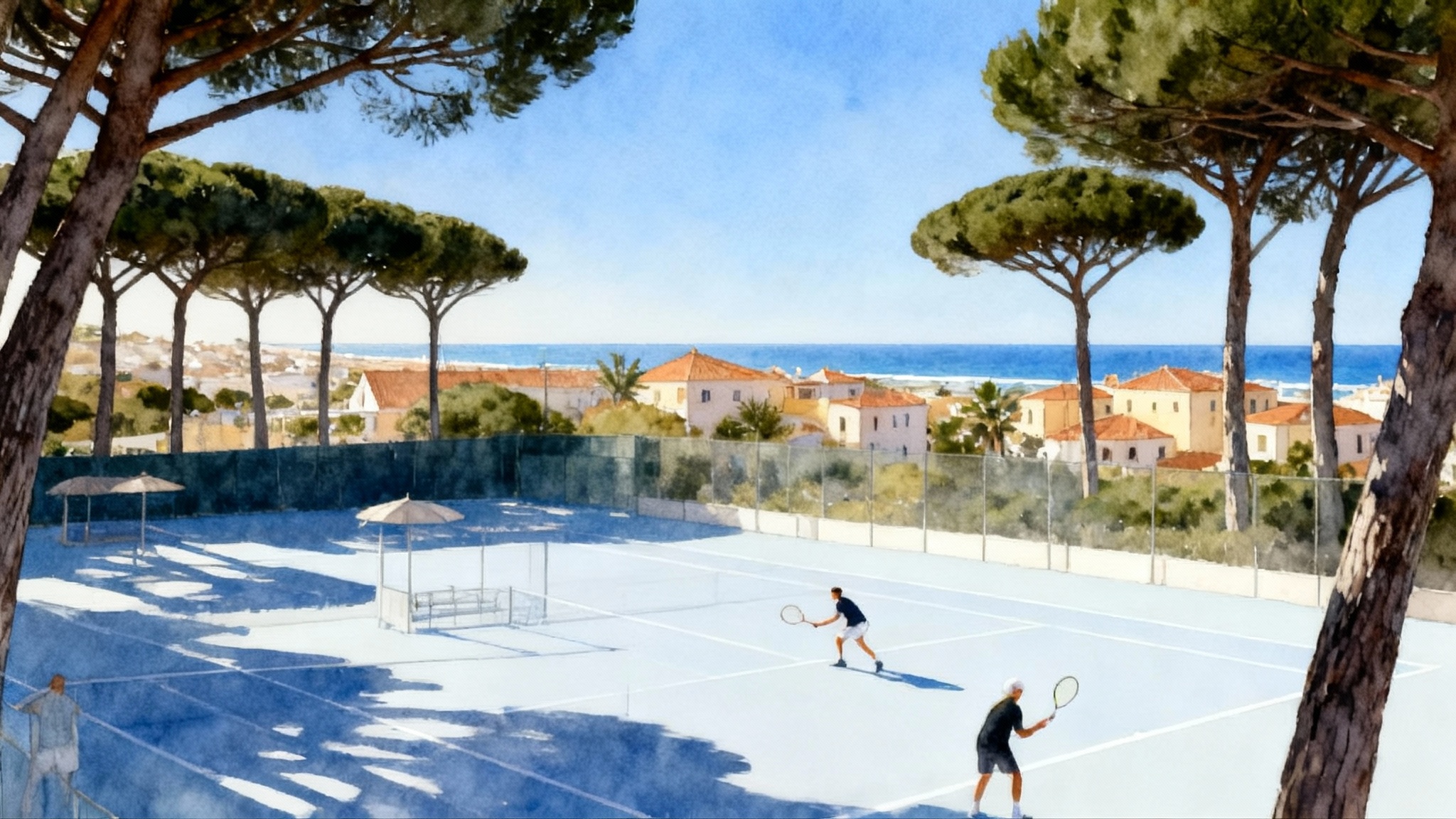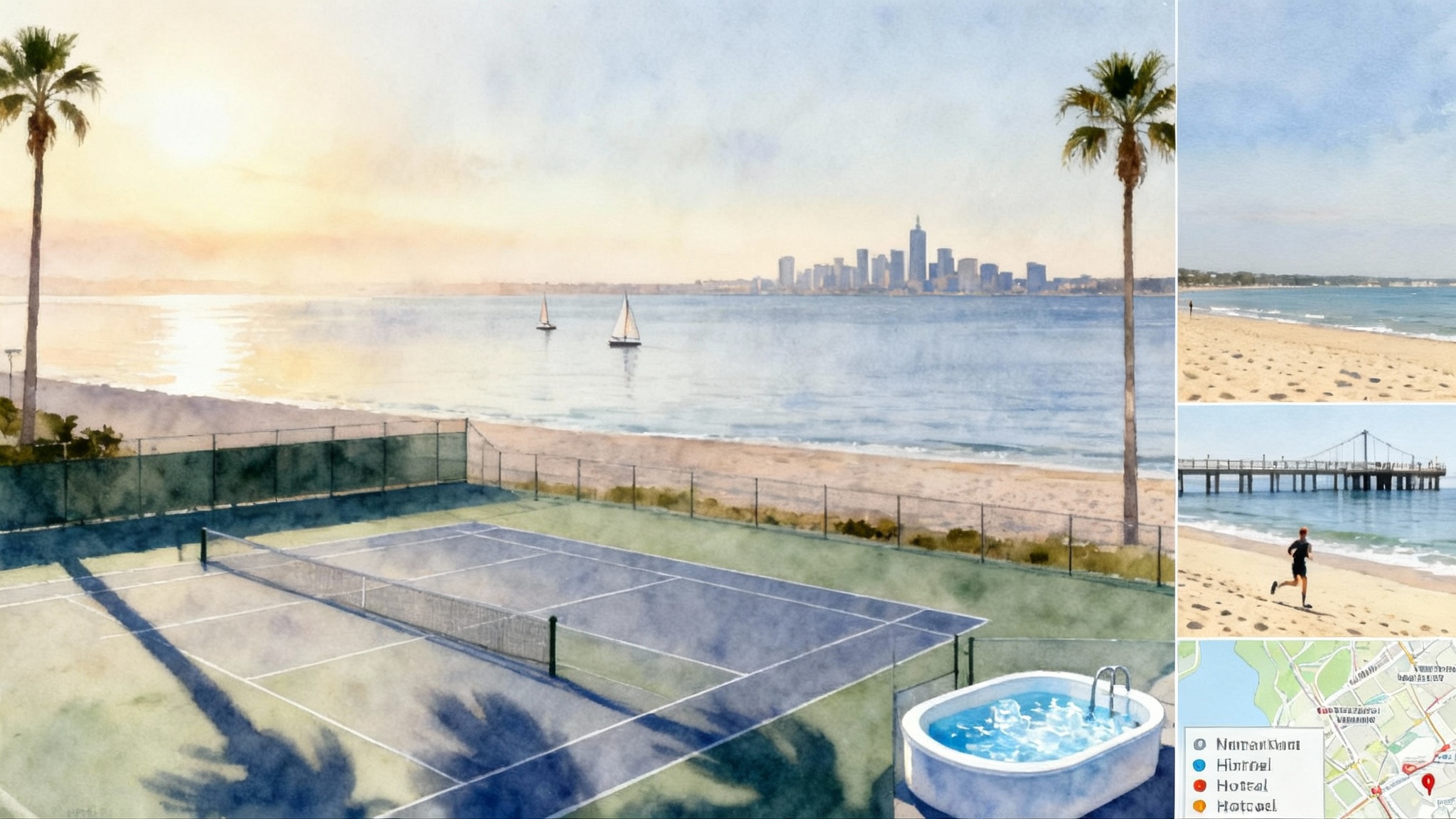Arizona Winter Tennis 2025–26: Phoenix versus Tucson Guide
From December through March, Arizona delivers dry courts, long playable days, and easy logistics. Compare Phoenix and Tucson on climate, wind, rain, daylight, court access, travel, and training plans for juniors, adults, and families.

Why Arizona is the safest bet for December through March
If you want winter tennis that feels scripted for consistency, Arizona is the play. From early December through late March, Phoenix, Scottsdale, and Tucson stack up warm afternoons, quick‑drying hard courts, and a daylight window that makes two sessions a day realistic without stress. This guide compares the two main hubs head to head, then gives you concrete itineraries and training paths you can act on immediately. Start with the academy profiles if you like to plan from the spine of your week: Fink Tennis Academy in Tucson and Phoenix Tennis Academy in Glendale.
Microclimates that favor repetition
Phoenix and Scottsdale sit in the northern Sonoran Desert at a lower elevation, while Tucson is a little higher and ringed by mountains. That difference quietly shapes how your tennis day feels.
- Temperature: Typical afternoon highs run in the mid 60s Fahrenheit in December, drifting to the low 70s by February and the mid to upper 70s by late March. Tucson generally trails Phoenix and Scottsdale by a couple of degrees. Mornings can be crisp in both places, which helps with high‑intensity drilling; afternoons are ideal for match play and serve‑speed work.
- Humidity: Air is dry across both metros. Balls feel lively, and heavy topspin jumps. Strings and grips dry fast. Expect a touch more liveliness in Phoenix and Scottsdale at the same time of day, simply because it is slightly warmer.
- Altitude effect: Tucson’s extra elevation and basin shape encourage light afternoon breezes more often than the Phoenix bowl. That is good for developing a reliable toss and a directional crosscourt rally that can hold its line.
Bottom line for practice blocks: Phoenix and Scottsdale make it very easy to stack back‑to‑back sessions with near‑identical ball response. Tucson adds just enough breeze to challenge your control without turning practice into survival.
Wind and rain patterns you can plan around
- Rain: Winter storms are spaced out. Think a handful of rainy days across an entire month rather than a week of washouts. Courts shed water quickly. Even after a shower, a squeegee and a short wait usually put you back on court the same day.
- Wind: Light in the morning, a notch higher in the afternoon, with Tucson more likely to see steady seven to twelve mile per hour breezes. Phoenix and Scottsdale sit slightly calmer on average. If your serve relies on a high toss, book serves and returns earlier in the day.
A practical schedule tip: use mornings for precision drilling, serve starts, and technical filming. Save afternoons for point play that embraces a bit of breeze and the livelier ball.
Daylight you can bank on
Most of Arizona, including Phoenix and Tucson, stays on Mountain Standard Time year‑round. In late December you have roughly ten hours of usable light, and by mid March you are close to twelve. Sunrise and sunset creep later and longer as you move from early January toward the equinox. That predictable window makes it easy to settle into a rhythm: morning practice, midday recovery, afternoon match play, then dinner and sleep.
If you are mapping a family week, that consistent sunrise and sunset makes it simple to rotate kids lessons, parents play, and shared time without fighting the clock.
Court access: resort, public, and club
Arizona’s public court culture is strong, and the resort scene is deep. Private clubs can be an option for guests of members or through day passes. Here is how access tends to shake out.
- Resort courts: Scottsdale and North Phoenix are loaded with resort complexes that maintain excellent hard courts and run adult and junior clinics for guests. Think morning clinics and open‑play blocks, with easier same‑day booking outside of holiday weeks. In Tucson, resort courts cluster in the foothills to the north and northeast. Many resorts allow non‑guests to book a limited number of hours for a day‑use fee.
- Public facilities: Phoenix and Scottsdale offer a dense network of municipal parks with lighted courts and a few dedicated tennis centers. You will find ladder play, round robins, and low‑cost clinics. Tucson’s public scene is anchored by large multi‑court hubs where you can mix drop‑in sessions with ball‑machine rentals and stringing on site.
- Private clubs: Access varies. In Scottsdale and Glendale, clubs often allow a trial lesson or a guest pass if you call ahead. Tucson clubs can be flexible during winter if you are serious about a training block. The key is to communicate your plan and to book early for holiday weeks.
Booking strategy that works
- Lock your morning slot first at a lighted public center or a resort that takes seven‑day reservations.
- Add an academy session in the afternoon. It guarantees match‑play partners and coaching focus.
- Keep a late afternoon floating. Use it when rain clears or when you want to add a targeted serve‑and‑return block.
If you want an alternate U.S. base with similar reliability, compare our North Texas winter tennis guide.
Training paths that scale with your calendar
You can treat winter in Arizona as a reset, a ramp, or a maintenance block. The two programs below support all three by combining structured group work with private add‑ons.
Fink Tennis Academy, Tucson
What to expect in structure
- Weekly arc: technical rebuild early in the week, live‑ball pressure midweek, match play and video review late week. This rhythm fits a five to seven day stay and leaves you with drills you can repeat at home.
- Daily block: morning footwork and patterns, then a second session that rotates between serve‑and‑return progressions, crosscourt‑to‑down‑the‑line transitions, and point building on score.
- On‑court ratios: competitive small groups for live ball, tighter ratios for technical work. Private add‑ons for serve or backhand shape are easy to schedule before or after the group block.
- Strength and movement: mobility and trunk‑rotation work to help you play a lot of sets on hard courts without stiffness the next day.
How to use it
- Juniors: combine three academy afternoons with two morning private sessions for serve shape and patterns. Stack a Saturday match day at a public center to test progress.
- Adults: pick a three‑day clinic sequence and add a one‑hour private lesson on day one to identify a single theme, such as taking the backhand early or building a plus‑one forehand.
- Families: book parallel clinics for adults and juniors, then close with a family doubles hit using the same patterns to make it a shared learning week.
Phoenix Tennis Academy, Glendale
What to expect in structure
- Weekly arc: early‑week mechanics and footwork, midweek pressure drills that add depth targets, late‑week match play on score with court‑positioning goals.
- Daily block: morning film or pattern drilling, afternoon live ball and point play, optional evening serving window under lights.
- On‑court ratios: stable groups for footwork and rally tolerance, with flexible add‑ons for targeted serves, returns, or net skills.
- Strength and movement: short, repeatable activation before play and a cooldown sequence you can take home.
How to use it
- Juniors: book a four‑day block that pairs academy afternoons with a morning ball‑machine and film session. Aim to exit with two measurable goals, such as first‑serve percentage and crosscourt depth through cone gates.
- Adults: choose a two or three day clinic run that targets doubles role clarity. Add one private session to build a reliable second serve and a first volley that lands deep middle.
- Families: adults take morning clinics, kids take after‑school sessions, then everyone hits a short family mixer before dinner.
Travel and logistics
Getting there and getting around
- Airports: Phoenix is the major hub with frequent nonstop service from many cities in the United States. Tucson International Airport covers the region well and is convenient if your entire week is in Tucson.
- Drive times: Phoenix Sky Harbor to Scottsdale resorts is often 20 to 30 minutes, to Glendale 25 to 40 minutes depending on traffic. Tucson airport to the foothills is commonly 25 to 40 minutes. Phoenix to Tucson is roughly 1 hour 45 minutes to 2 hours on Interstate 10 in normal conditions.
- Car or ride share: A rental car gives you real flexibility to chase open courts and to reach academy sessions across town. Ride share works well inside each metro but becomes expensive if you are crossing longer distances for doubles leagues or match play.
Booking windows and budget ranges
- Courts: Public courts often allow seven‑day reservations. Resort courts may prioritize guests during holiday periods and can sell day passes for a fee. Private clubs sometimes allow a guest booking if you call ahead.
- Coaching: Winter is busy. Book academy slots two to four weeks ahead for February and March. Private lessons bookable inside a week are still common, especially midday.
- Housing: If your plan hinges on a specific court center, book lodging within 15 minutes of that site. Cutting drive time makes it much easier to hold to a two‑session‑per‑day schedule.
Sample week itineraries you can copy
Each plan assumes two on‑court sessions per day. Shift times to your sleep pattern and the daylight window.
Juniors, performance track
Goal: sharpen serve and return, add rally tolerance at pace, and simulate competitive pressure.
- Day one, Tucson: morning, 90 minutes of footwork ladders and crosscourt targets at a public center near the academy. Afternoon, group live ball at Fink Tennis Academy, finish with 10 minutes of serve routines. Evening, short cooldown and 10 minutes of journal notes.
- Day two, Tucson: morning, private lesson for serve shape and first‑ball depth. Afternoon, academy point play with score. Evening, watch 10 minutes of video on patterns.
- Day three, Tucson to Phoenix transfer: morning, serve and return only, then travel. Late afternoon, light hit to recover.
- Day four, Glendale: morning, ball machine with film on a single theme, such as backhand contact point. Afternoon, Phoenix Tennis Academy group session focused on neutral ball plus one. Evening, flexibility work.
- Day five, Glendale: morning, return of serve practice with cones for depth. Afternoon, academy match play and a short pressure tiebreaker set. Evening, mental rehearsal.
- Day six, Scottsdale: morning, free public hit with a lower‑intensity theme, such as short court and approach patterns. Afternoon, friendly match at a resort court. Evening, rest.
- Day seven: morning, serve accuracy test to nine targets. Afternoon, optional doubles set, or complete rest.
Adults, skills and play
Goal: cleaner contact, predictable second serve, and doubles shape that holds under pressure.
- Day one, Scottsdale: morning, one‑hour private lesson to identify a single forehand or backhand theme. Afternoon, resort or public clinic for live‑ball volume.
- Day two, Scottsdale: morning, second‑serve progression and return depth gates. Afternoon, doubles clinic with role clarity on the first two balls.
- Day three, Scottsdale: morning, structured practice set with a focus on crosscourt first. Afternoon, light hit or rest, then an evening serve window of 30 minutes under lights.
- Day four, Glendale: morning, film and target serving, then travel to an afternoon academy session for pattern building. Evening, cooldown and hydration plan.
- Day five, Glendale: morning, doubles play test with pre‑point plan. Afternoon, academy tiebreaker session.
- Day six, Phoenix or Tucson depending on your base: morning, scenic hike or pool recovery, then a short mid‑afternoon hit that rehearses the week’s single theme. Evening, match or rest.
- Day seven: morning, assessment hit, write a plan for the next four weeks at home.
Families, mixed levels
Goal: keep everyone learning and happy while sharing a few sessions.
- Day one, Tucson: parents morning clinic at a resort or public center, kids junior clinic after lunch, finish with a shared family half hour of games like king of the court.
- Day two, Tucson: parents private lesson together for doubles roles, kids group clinic. Afternoon, pool and homework time, then a sunset short hit.
- Day three, transfer to Phoenix or stay put: morning, family hike and rest. Afternoon, open play at a public center with a basket to repeat what coaches taught.
- Day four, Glendale or Scottsdale: parents clinic that stresses first‑volley depth, kids supervised point play. Evening, casual dinner near courts.
- Day five: parents free hit with targets while kids do a one‑hour private lesson. Afternoon, family doubles with simple rules.
- Day six: parents rest, kids fun match play. Evening, everyone plays eight short tiebreakers before dinner.
- Day seven: family choice day, one last shared hit or complete rest before travel.
Gear, stringing, and hydration for the desert
- Strings and tension: Dry air and lively hard courts reward a touch more control. If you normally play a co‑poly at 48 pounds, consider 50 to 52. If you use a hybrid, keep the cross string a couple of pounds tighter than at home to protect launch angle.
- Balls: New balls play fast in the dry air. If you like a slightly deader feel, rotate cans across sessions rather than always opening fresh.
- Grips: Carry extra overgrips and switch them during water breaks. Dry air is comfortable but can glaze grips quickly.
- Hydration and salt: Start your day with water and a salt source. For long match play, alternate water with an electrolyte drink. Err on the side of more fluids in the afternoon.
- Sun and skin: Wear a hat, sunglasses, and a light long sleeve for the first hour. Apply sunscreen before the warmup, not on the baseline just before serves.
The bottom line
Phoenix, Scottsdale, and Tucson give you a rare winter combination. Warm afternoons, dry air, and dependable daylight create a training canvas that rewards repetition. Phoenix and Scottsdale are the kings of convenience, with hundreds of courts and a calm, consistent ball. Tucson adds a touch of breeze and elevation that make you more honest off the toss and through contact. Choose your base by personality and by where your specific goals will be served best.
Build your week around a reliable morning court, then anchor your afternoons with a structured academy block at Fink Tennis Academy or Phoenix Tennis Academy. Add one private session to set a clear theme, and hold to a simple hydration and stringing plan. When you fly home, you will not just have a tan and a few fun matches. You will have a sharper second serve, a steadier rally ball, and a winter playbook you can repeat every year.
